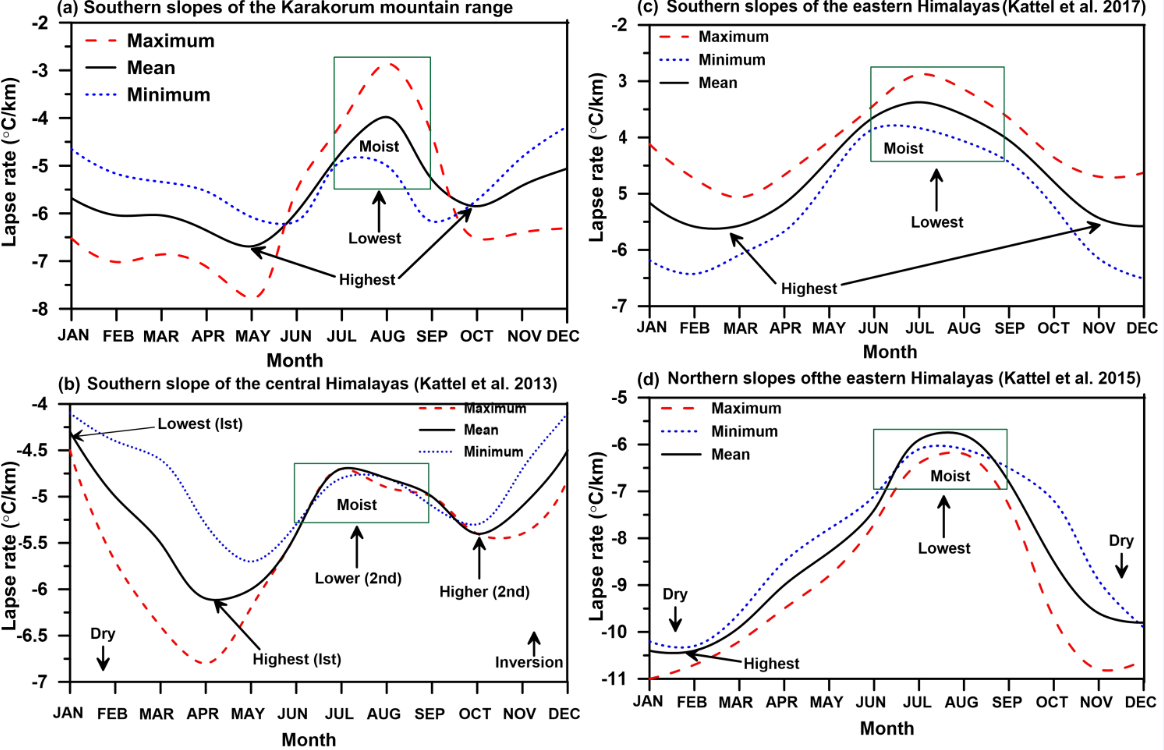
Research across several areas of the "Third Pole" – the high-mountain region centered on the Tibetan Plateau – shows a seasonal cycle in how near-surface temperature changes with elevation. Near-surface temperature, which reflects the energy balance at the land surface, is crucial because it drives climate processes.
The research was conducted by a team led by Dr. D. B. Kattel, a researcher at the Institute of Tibetan Plateau Research of the Chinese Academy of Sciences. It was published in Theoretical and Applied Climatology, with Dr. Kattel as the lead author.
The Third Pole stores more snow and ice than anywhere else in the world outside the Arctic and the Antarctic, thus earning it the “Third Pole” sobriquet.
The unique cryospheric (i.e., involving frozen water) processes at the Third Pole make the area particularly sensitive to global environmental changes. Slight changes in climate can result in large-scale melting of glaciers, permafrost and persistent snow, thus altering the land-surface energy balance at the Third Pole and air and water cycles in the region and beyond.
As many major Asian rivers originate from Third Pole glaciers – thus making the area the "water tower of Asia" – changes in such glaciers can be felt ecologically and economically through those rivers by almost one-fifth of the world’s population across more than 10 countries.
In his most recent research, Dr. Kattel and his team examined 53 in situ climate records from Pakistan. Combining these data with climate records from Nepal, Bhutan and the southeastern Tibetan Plateau, the team identified different forces behind variations in near-surface temperature with elevation, time and space, thus offering a three-dimensional view of climatic behavior on the Third Pole.
For example, their research showed different factors controlling temperature variability in the northern and southern slopes of the Himalayas.
"The monsoon controls the near-surface temperature throughout the region during summer," said Dr. Kattel. "However, micro- and topoclimatic effects are [a stronger influence on] minimum temperature on the southern slopes and the maximum temperature on the northern slopes of the Himalayas."
These results provide a more accurate basis than earlier studies for modeling and prediction related to glacier movement, forestry as well as agriculture at the Third Pole, all of which are very sensitive to temperature.

Monthly variation in near-surface maximum, minimum and mean temperature gradients (or lapse rates) in Pakistan (a), Nepal (b), Bhutan (c) and Southeastern Tibetan Plateau, China (d) over the Third Pole region. (Image by Kattel)

86-10-68597521 (day)
86-10-68597289 (night)

52 Sanlihe Rd., Xicheng District,
Beijing, China (100864)

